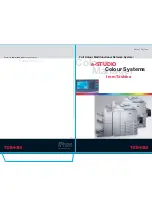
CHAPTER 23. LIVE INSTRUMENT REFERENCE
416
Snap
Snaps all start and end points to the waveform zero-crossings (points where the
amplitude is zero) to avoid clicks. As with Simpler, this snap is based on the left channel of
stereo samples, so a small Crossfade value may be necessary in some cases to completely
eliminate clicks.
Sample
Displays the name of the current sample layer, and can be used to quickly select
from among the sample layers of the loaded multisample.
Root Key (RootKey)
De nes the root key of the current sample.
Detune
The sample tuning can be adjusted here by +/- 50 cents.
Volume
A wide-range volume control, variable from full attenuation to a gain of +24 dB.
Pan
Samples can be individually panned anywhere in the stereo panorama.
Sample Playback
All of the following
sample-speci c
parameters work in conjunction with the
global
volume
envelope (in the Filter/Global tab) to create the basic voicing of the Sampler instrument. If
you are unfamiliar with how envelopes work, you will nd that they are well documented in
Operator's
Envelopes
section
.
All time-based values in this tab are displayed in either samples or hours:seconds:millise-
conds, which can be toggled using the
(PC) /
Ctrl
(Mac) context menu on any
of their parameter boxes.
Samples in this context refer to the smallest measurable unit in
digital audio, and not to the audio les themselves, which we more commonly refer to as
samples.
Sample Start
The time value where playback will begin. If the volume envelope's Attack
parameter is set to a high value, the audible result may seem to begin some time later than
the value shown here.
Sample End
The time value where playback will end (unless a loop is enabled), even if the
volume envelope has not ended.
Sustain Mode
The optional Sustain Loop de nes a region of the sample where playback
will be repeated while the note is in the sustain stage of its envelope. Activating the Sustain
Loop also allows the Release Loop to be enabled. This creates several playback options:
















































